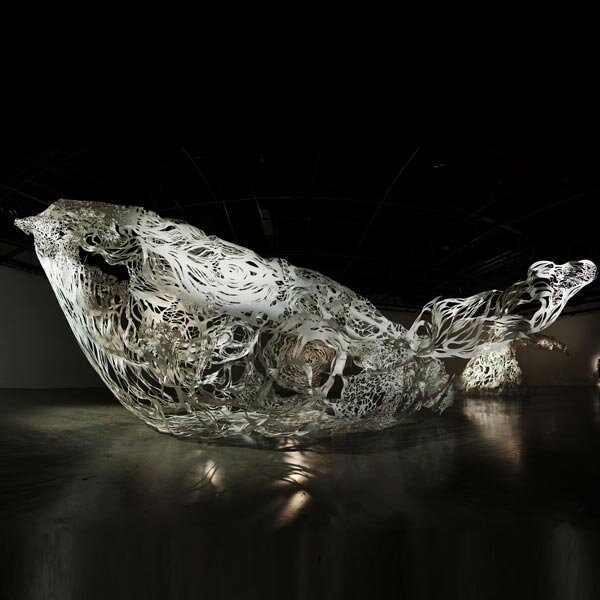Out of Disorder: The Story of Takahiro Iwasaki's Radical Sculptures
by Cezary Jan Strusiewicz | ART
© Takahiro Iwasaki, Duct Tape Sculpture, Geoeye (Victoria Peak), courtesy of Urano
The manga Akira by Katsuhiro Otomo is considered one of the staples of the cyberpunk genre thanks to its depiction of an oppressive, post-apocalyptic version of Tokyo, as well as themes of corruption, violence, and abuse of power. It’s definitely not the cheeriest work of fiction of there, which is why it’s no surprise that the comic book has been cited by the Japanese artist Takahiro Iwasaki as a huge influence on his miniature art.
© Takahiro Iwasaki, Out of Disorder (Mountains and Sea), courtesty of The Japan Foundation
The Hiroshima-born sculptor, whose work has been exhibited all over the world, has gained international fame thanks to his Out of Disorder series of miniatures. The series is unique because of the medium the artist uses. Instead of metal, wood, or stone, Iwasaki’s Out of Disorder works recreate topographical maps and industrial landmarks using towels, hair, duct tape, dust, and other mundane items.
© Takahiro Iwasaki, Out of Disorder (Bush Series), courtesty of Urano
Most importantly, they do it at an intricately tiny scale, with most of the incredibly-detailed models often taking up less space than a small book.
The Out of Disorder exhibition that Iwasaki held at the Kawasaki City Museum is of particular importance because it really showcases the extent of Akira’s influence on the artist’s style.
© Takahiro Iwasaki, Out of Disorder (Offshore Model), courtesty of Urano
Although Takahiro Iwasaki’s other miniatures can often be quite bright and colorful, the Kawasaki exhibition was made entirely out of black, gray, and brown materials, including oil-soaked rags. It focused entirely on the city’s industrial scenery, like its power plants, cranes, and oil refineries, i.e. things quite close thematically to the depressing cyber-dystopia of Otomo’s comic. But that’s actually just the first layer of both artists’ works that stealthily obscures a more positive message hidden underneath them.
© Takahiro Iwasaki, Out of Disorder (Neon Scape), courtesty of Urano
You see, at the end of Akira, the futuristic Neo-Tokyo sheds its oppressive outer layer, rising from the ashes towards a brighter future, which is also very much the theme of Iwasaki’s Kawasaki exhibition.
© Takahiro Iwasaki, Out of Disorder (Zeon Corporation), courtesty of Urano
The thing you have to remember about Kawasaki is that it was one of the centers for Japan’s economic rebirth after World War II. It was the heavy industry-centric Kawasaki that helped Japan get back on its feet and become a world superpower thanks in no small part to its refineries, power plants, and cranes. So, while the works of Takahiro Iwasaki do look all dark and depressing, they are in reality a throwback to the past, depicting a city in the middle of being reborn.
© Takahiro Iwasaki, Reflection Model (Perfect Bliss), courtesty of Urano
This actually connects nicely to another one of Iwasaki’s series of works, Reflection Model, which are incredibly detailed reproductions of Japanese temples in wood. However, here, the air-suspended sculptures have their inverted versions attached to them underneath, creating an illusion of a structure being reflected in water.
© Takahiro Iwasaki, DOMANI: The Art of Tomorrow, 2014, The National Art Center, Tokyo
And yet, the “reflection” doesn’t shimmy. It remains perfectly still, suggesting that the Reflection Model works aren’t showing a natural state, but rather a temporary snapshot in time. In short, they show that how things look NOW isn’t how they’ll always be. They show that things can change, evolve, and, hopefully, get better at the end. That, in essence, is the surprisingly positive message behind the miniature apocalypses of Takahiro Iwasaki.
Check out more of Takahiro Iwasaki's artwork, and many other great artists at Urano!















LIFESTYLE | July 28, 2023